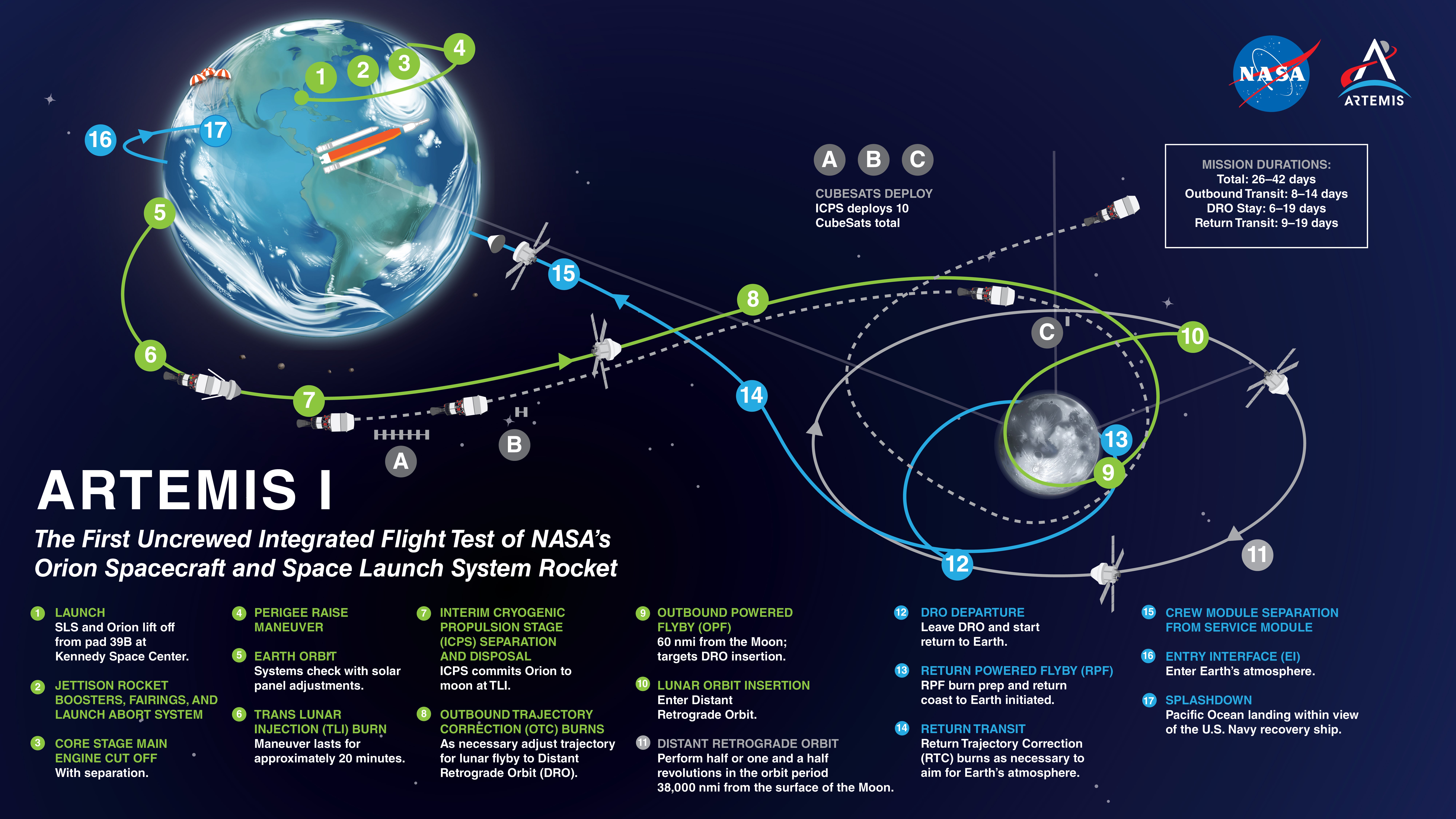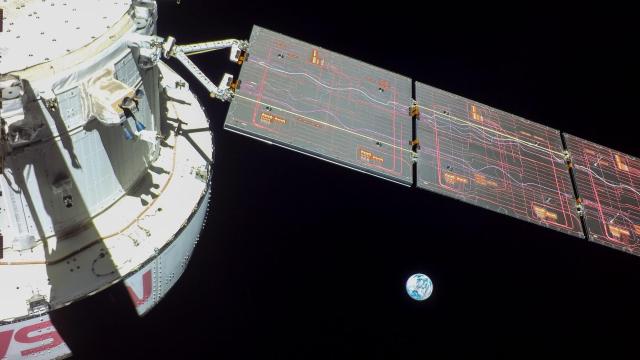The uncrewed Orion capsule has reached its ultimate destination, a distant retrograde orbit around the Moon. The spacecraft successfully executed a short trajectory correction burn earlier today.
Update: 8:09 am AEDT: NASA has confirmed a “good burn,” saying Orion was successfully placed in a distant retrograde orbit around the Moon. The manoeuvre began at 4:52 p.m. ET as planned, and it lasted for one minute and 28 seconds.
Original post follows.
NASA’s coverage begins at 8:30 am AEDT, with the trajectory correction burn scheduled to begin at 8:52 am AEDT. You can follow along at NASA TV, YouTube, or at the live stream below. The burn will last for less than 2 minutes, so it’s not a very long process.
The intended distant retrograde orbit (DRO) is called “distant” because Orion will travel some 40,000 miles (64,000 kilometers) beyond the Moon before it treks back. It’s a gigantic orbit, so gigantic, in fact, that “it will take the spacecraft six days to complete half of a revolution around the Moon before exiting the orbit for the return journey back to Earth,” according to NASA. The “retrograde” aspect of the orbit means that the capsule will orbit around our natural satellite opposite to the direction the Moon travels around Earth.
Orion is poised to break Apollo 13’s distance record on Saturday when it will be 480,494 km from home. No crew-rated vehicle has travelled so far beyond the Moon.
Orion completed its sixth and final outbound trajectory correction burn yesterday. The capsule, which began the process of entering DRO on Monday, November 21, is currently moving at 4,200 km per hour (4,200 km/hr). NASA briefly and unexpectedly lost contact with Orion on Wednesday, but the capsule has otherwise performed as expected.

Today is day 10 of the 25.5-day Artemis 1 mission, which began with the dramatic inaugural launch of NASA’s Space Launch System (SLS) rocket on Wednesday, November 16. Artemis 1 is meant to demonstrate both SLS and Orion, the latter of which still needs to survive an atmospheric reentry, at which time it’ll slam into our atmosphere at speeds reaching Mach 32 (39,204 km per hour). During the attempted reentry, Orion’s heat shield will experience temperatures in excess of 5,000 degrees Fahrenheit.
Before that happens, however, Orion must pull off today’s orbital insertion and then pull off an exit manoeuvre on December 1 to escape the Moon’s gravitational clutches. The act of leaving distant retrograde orbit will require Orion to perform another lunar flyby. Orion is expected to splashdown in the Pacific Ocean on December 11.
Artemis 1 is the first of what NASA hopes will be a series of increasingly complex missions to the lunar environment. The space agency is aiming to repeat the current mission, but with astronauts on board, in 2024, and land humans on the Moon later this decade.
More: NASA’s Orion Sends Back Haunting New Views of the Moon’s Tortured Surface
